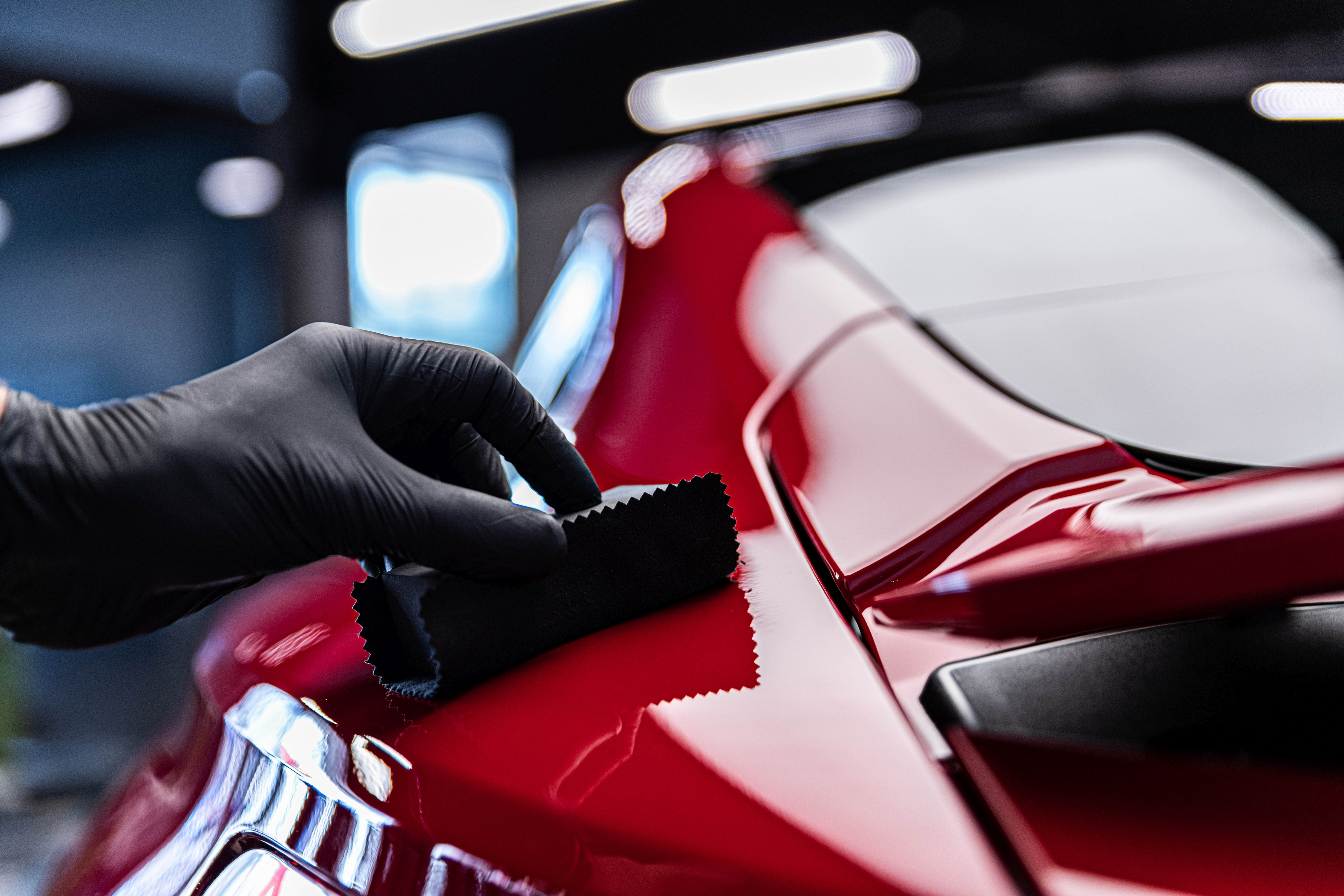Frequently Asked Questions Regarding Ceramic Coating Philadelphia Provider Answered
Frequently Asked Questions Regarding Ceramic Coating Philadelphia Provider Answered
Blog Article
Why Ceramic Layer Is the Ultimate Remedy for a Remarkable Complete
Ceramic finish has actually become a leading remedy for those seeking a perfect finish for their vehicles, thanks to its amazing sturdiness and safety features. This innovative liquid polymer not only bonds effortlessly with factory paint but likewise provides a formidable barrier against usual dangers such as scratches, UV rays, and environmental toxins. Its hydrophobic residential or commercial properties streamline upkeep while boosting visual allure. Understanding just how this technology contrasts to standard approaches and exploring its application nuances can reveal also a lot more concerning its worth. What factors genuinely established ceramic covering apart?
What Is Ceramic Finish?

When applied appropriately, ceramic finishing develops a hydrophobic surface that pushes back water and dirt, making it easier to clean and keep. Unlike typical waxes or sealants, which usually use short-term protection, ceramic finishings can last for several years, depending upon the product high quality and application approach. The process of applying ceramic coating needs thorough preparation, consisting of detailed cleaning and often paint improvement, to guarantee ideal bonding and efficiency.
Ceramic coverings are not restricted to automobile surface areas; they can likewise be utilized on numerous products, including glass, metal, and plastics, offering a functional option for boosting security. In general, ceramic covering stands for a significant innovation in surface defense technology, integrating both aesthetic and useful advantages for a variety of applications.
Benefits of Ceramic Layer
While numerous surface area security choices exist, the benefits of ceramic covering stand apart due to its special residential properties and lasting performance. Among the primary benefits is its extraordinary toughness. Ceramic Coating Philadelphia. Unlike standard wax or sealers that need regular reapplication, ceramic coverings provide a resilient layer that can last for several years, dramatically minimizing upkeep initiatives
Another notable advantage is improved defense versus environmental impurities. Ceramic layers create a hydrophobic surface area that wards off water, dirt, and numerous toxins, making it much easier to clean. This function not only maintains the vehicle's appearance however also reduces the risk of corrosion and oxidation, particularly in harsh weather condition problems.
Additionally, ceramic coverings offer remarkable resistance to UV rays, preventing fading and deterioration of paint gradually. This UV security is crucial for preserving the visual worth of surface areas and cars subjected to guide sunshine.
Furthermore, the shiny surface attained with ceramic finish improves the general visual charm, offering surfaces a showroom-quality luster. Overall, ceramic layers stand for a considerable development in surface protection innovation, giving long-lasting benefits that provide to both functional and visual requirements.
Just How It Functions
Comprehending the science behind ceramic coverings reveals exactly how they provide such remarkable defense and longevity. At its core, a ceramic finish is a liquid polymer that chemically bonds with the car's factory paint.
The application procedure involves several actions, consisting of surface preparation, which is essential to accomplishing optimum bond. When applied, the layer goes through a healing procedure, during which it sets and forms a semi-permanent bond with the paint surface. This bond is what identifies ceramic layers from conventional waxes and sealers, giving a longer-lasting protective barrier that can endure for years.
In addition, the thickness of the finishing can boost its protective top qualities, guaranteeing that it can stand up to rough conditions. Ultimately, the science of ceramic finishes incorporates advanced materials with innovative application methods to provide an unmatched degree of protection and visual improvement for vehicles.
Comparison With Conventional Approaches
The advantages of ceramic coverings end up being particularly apparent when compared to conventional paint defense approaches such as sealants and waxes. While waxes supply a short-term shine, normally lasting a try this couple of weeks to a pair of months, ceramic finishings supply a long-lasting safety layer that can endure for a number of years. This longevity considerably decreases the regularity of reapplication, making ceramic finishes a much more affordable remedy gradually.
In addition, typical approaches commonly require comprehensive prep work and numerous applications to attain a satisfying level of protection. On the other hand, ceramic finishings bond at a molecular level with the car's surface, developing a robust guard against ecological impurities like UV rays, acid rain, and road salts. This bond improves the vehicle's resistance to scratches and swirl marks, which prevail with standard waxes and sealers.
Furthermore, the hydrophobic residential or commercial properties of ceramic layers repel water and dust, leading to less complicated cleansing and upkeep. In comparison, wax and sealant-treated surfaces can draw in crud, requiring even more regular washing - Ceramic Coating Philadelphia. On the whole, ceramic layers not only provide premium security however additionally provide an extra long-lasting and visually attractive finish, developing them browse around this site as the recommended choice for critical lorry proprietors
Application and Maintenance Tips

Using a foam applicator, use the finishing in small areas, complying with the manufacturer's standards regarding thickness and overlap. Allow enough treating time in between coats, generally 24 hours, to guarantee proper bonding. After application, it is crucial to prevent direct exposure to water or harsh aspects for at least a week to enable the coating to completely cure.
In addition, making use of a ceramic upkeep spray can boost the finish's hydrophobic homes and longevity. Regular assessments for any type of indications of wear will assist preserve the finish's honesty and preserve that beautiful coating.
Verdict
In final thought, ceramic finishing emerges as an exceptional choice for achieving a flawless auto coating. By developing a durable bond with factory paint, ceramic layer properly shields versus scratches, UV rays, and environmental impurities.

Report this page